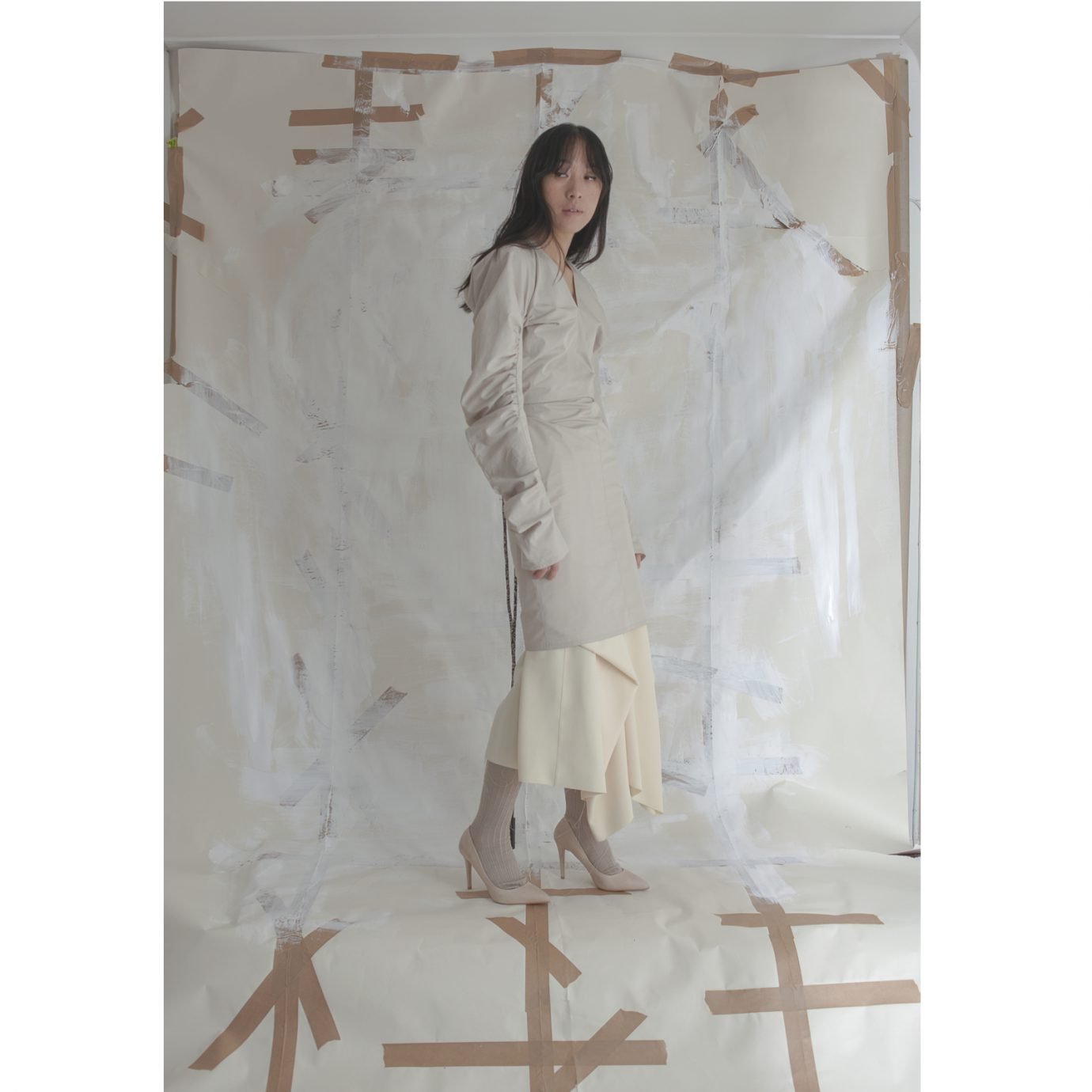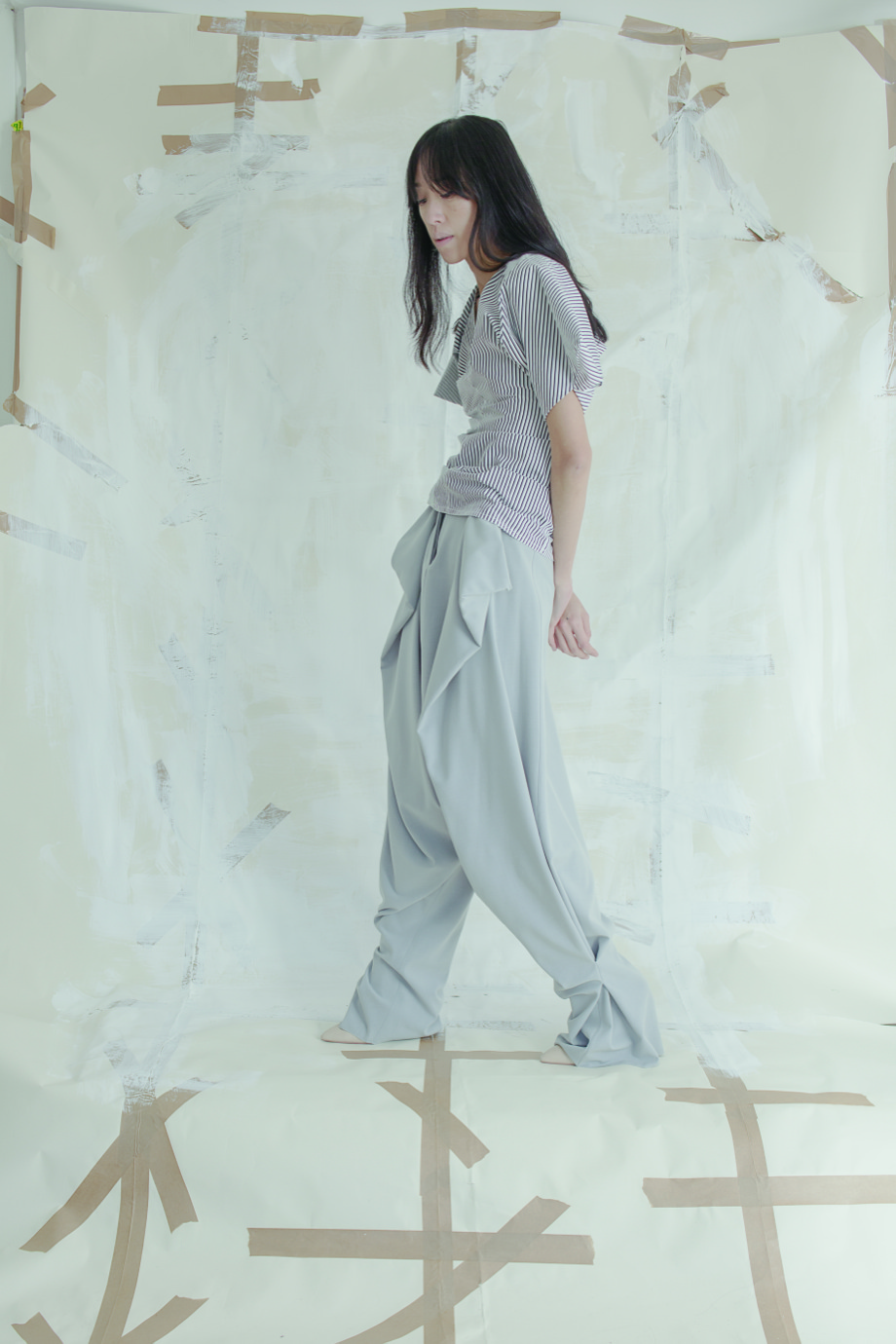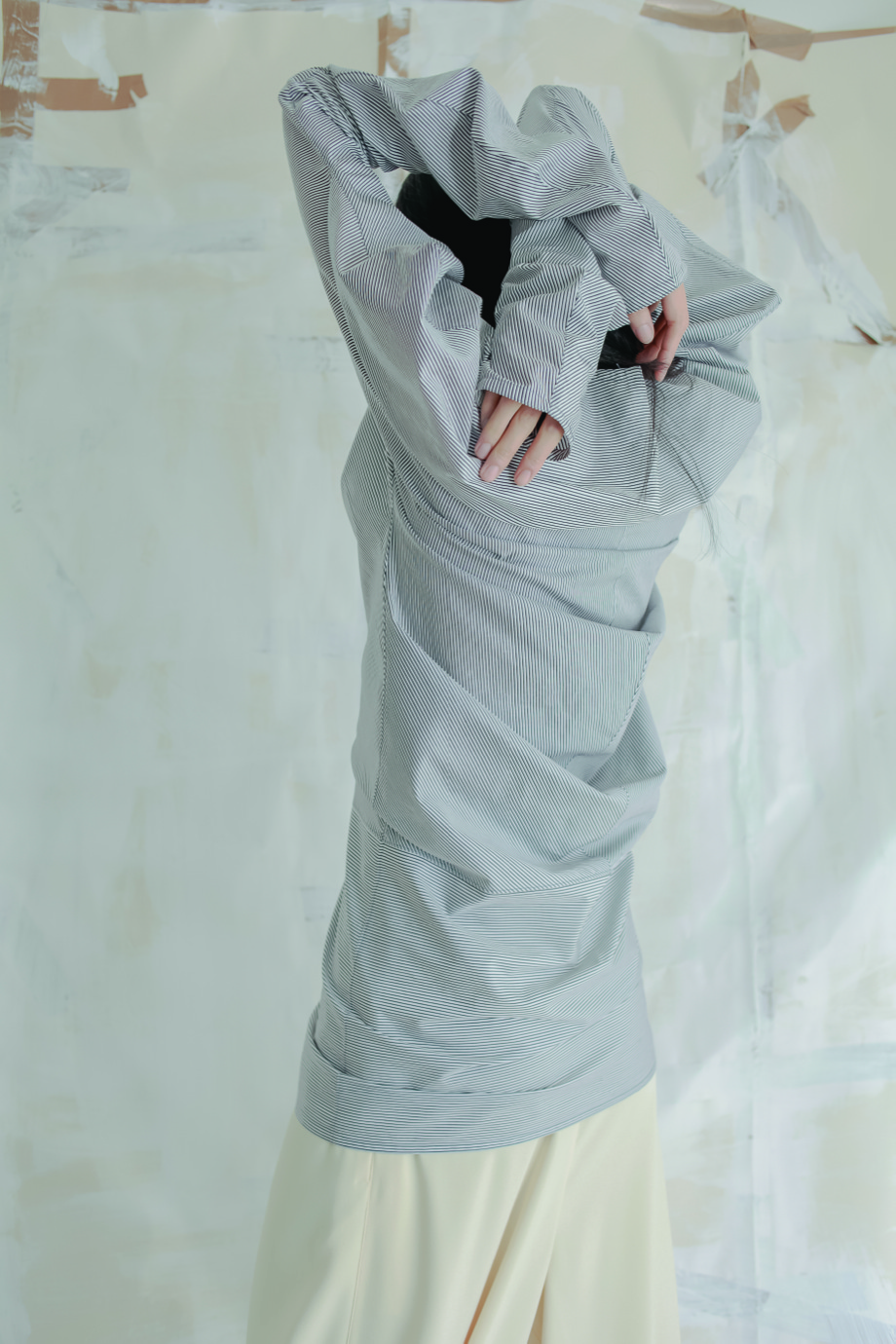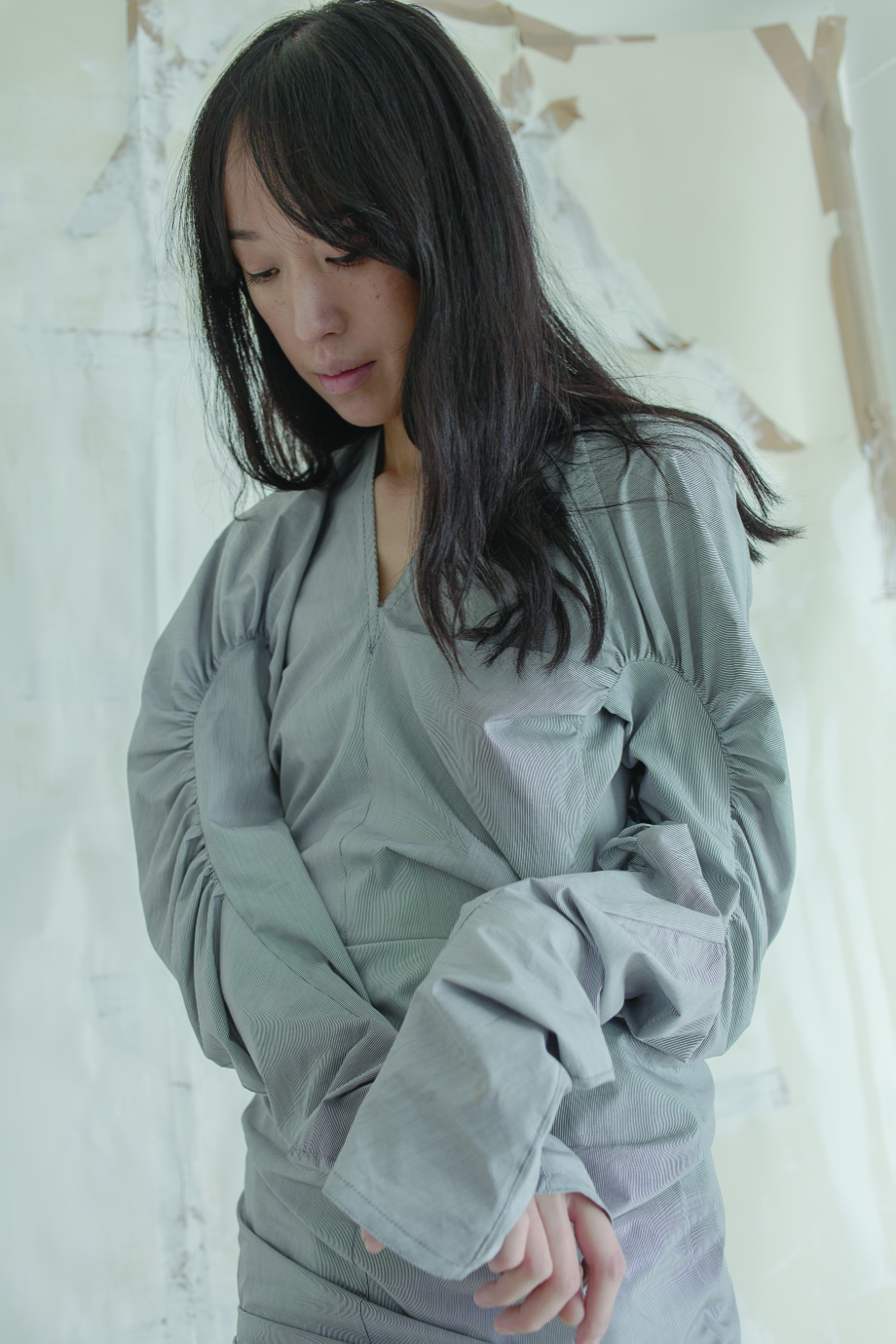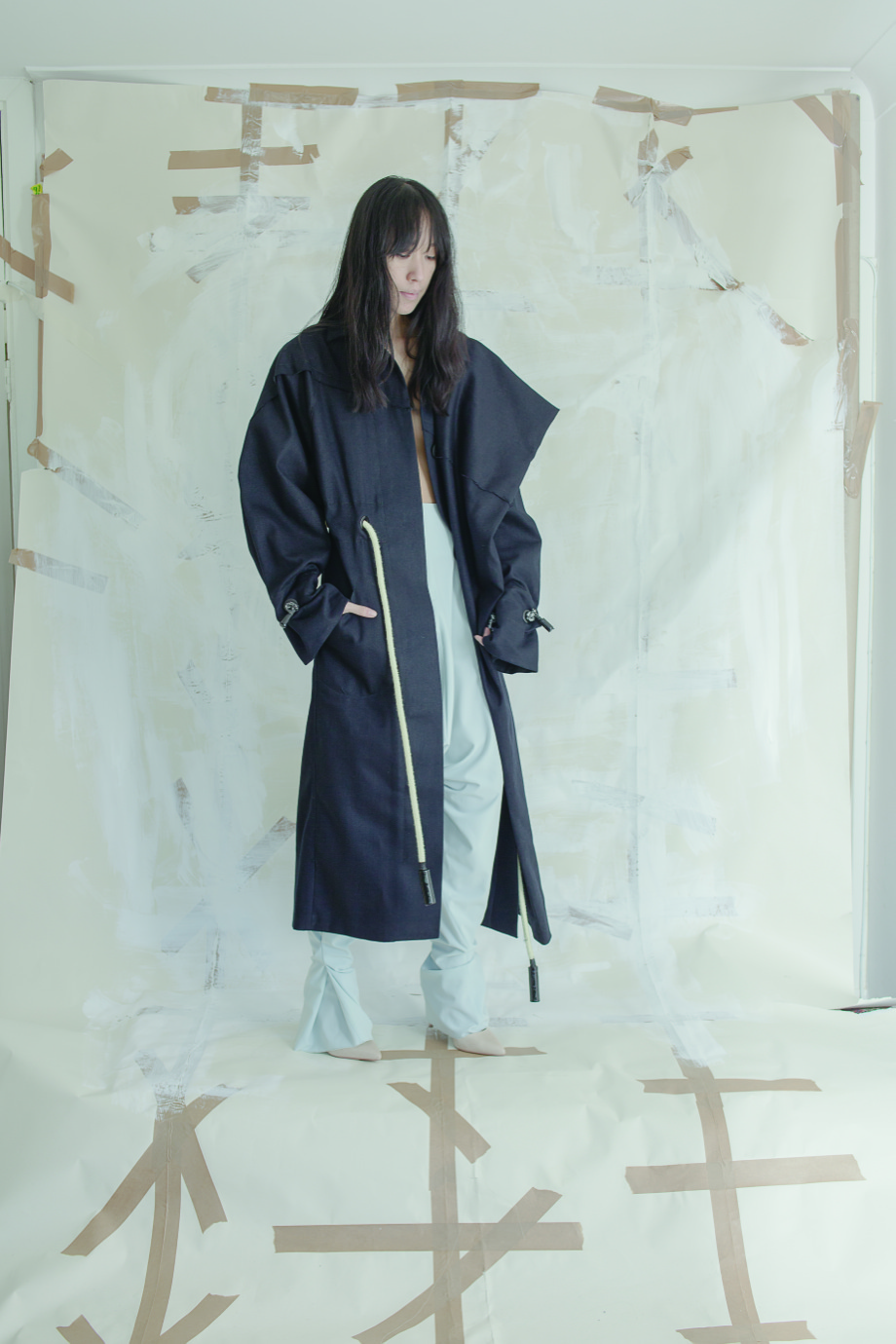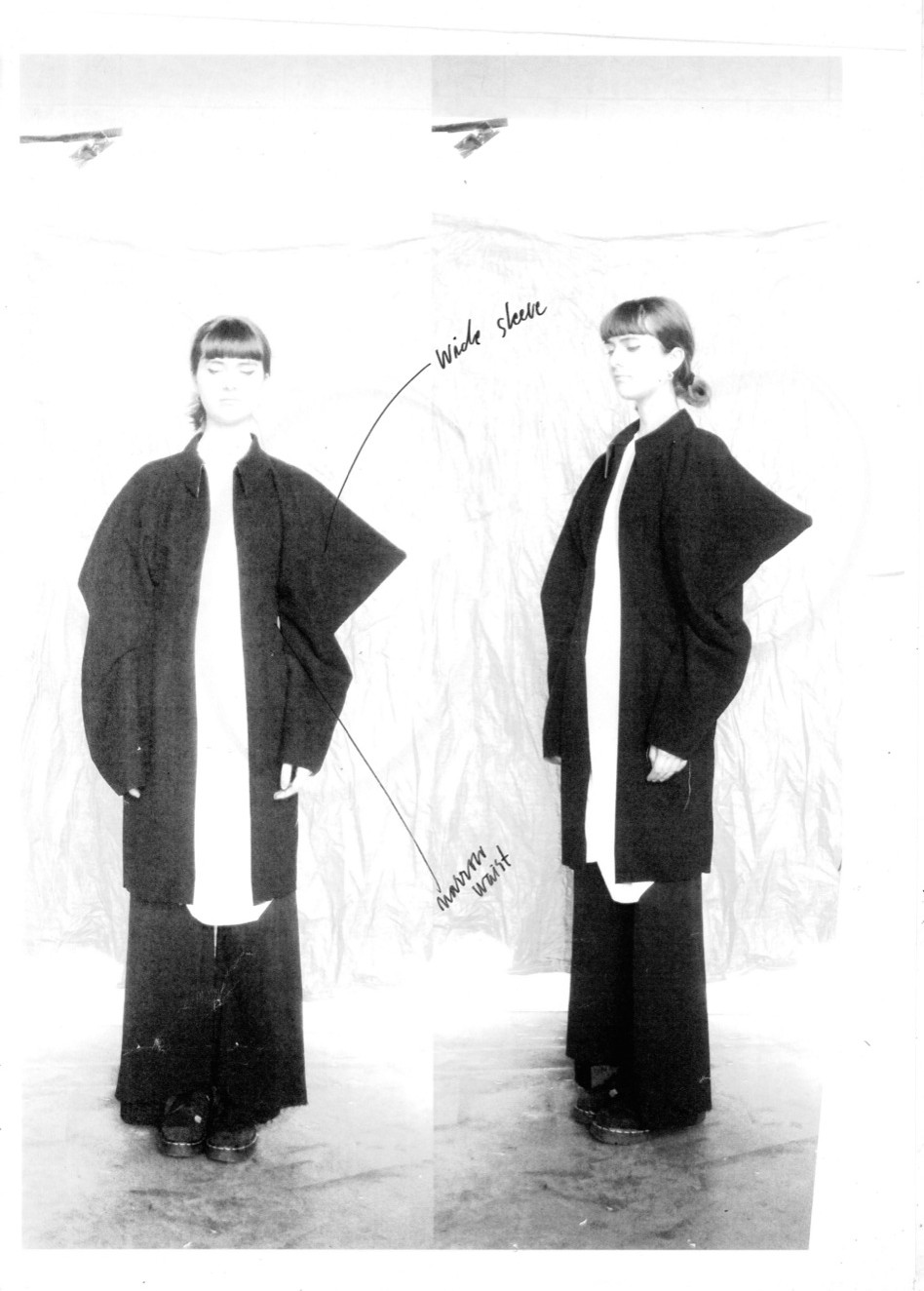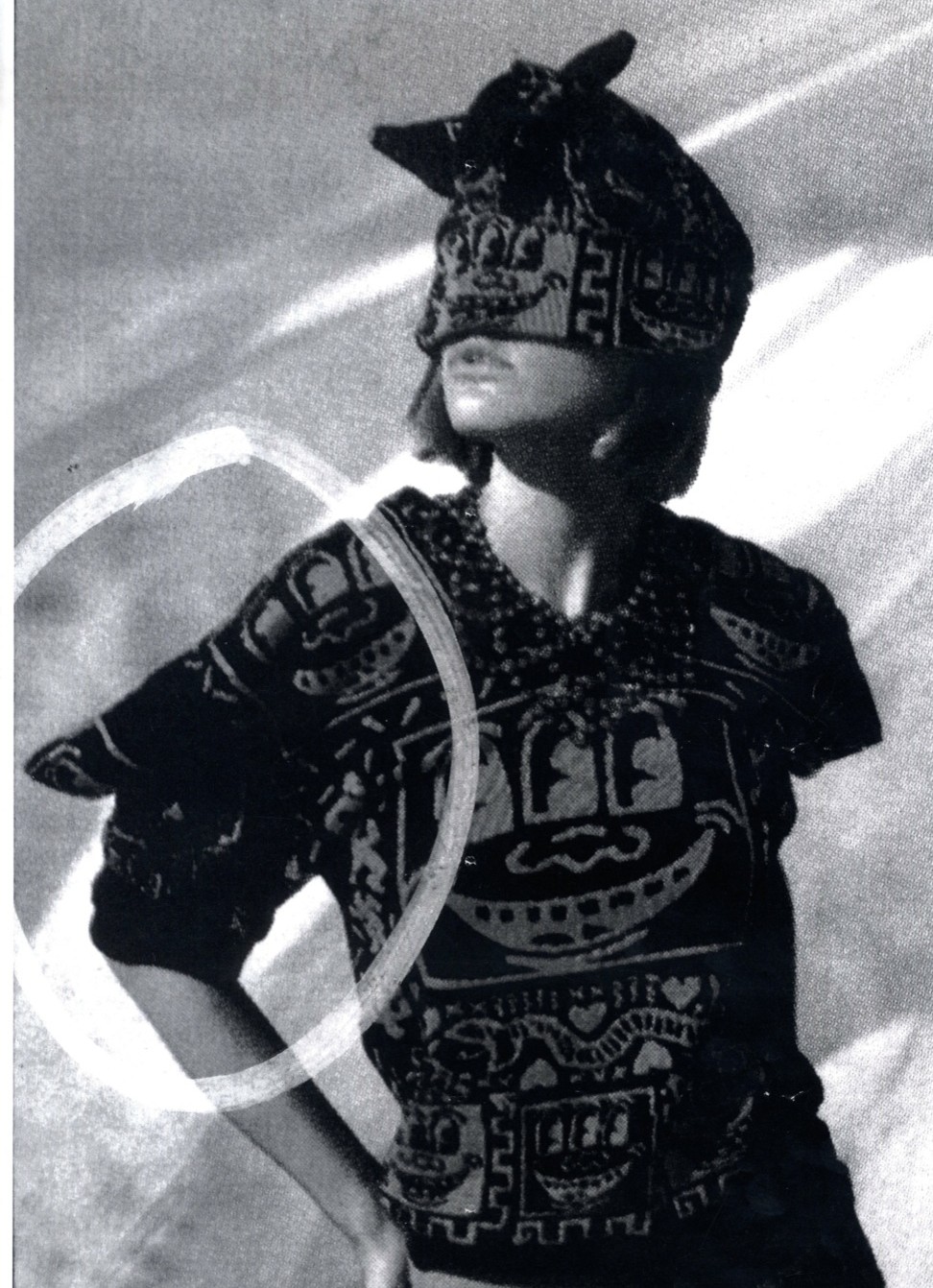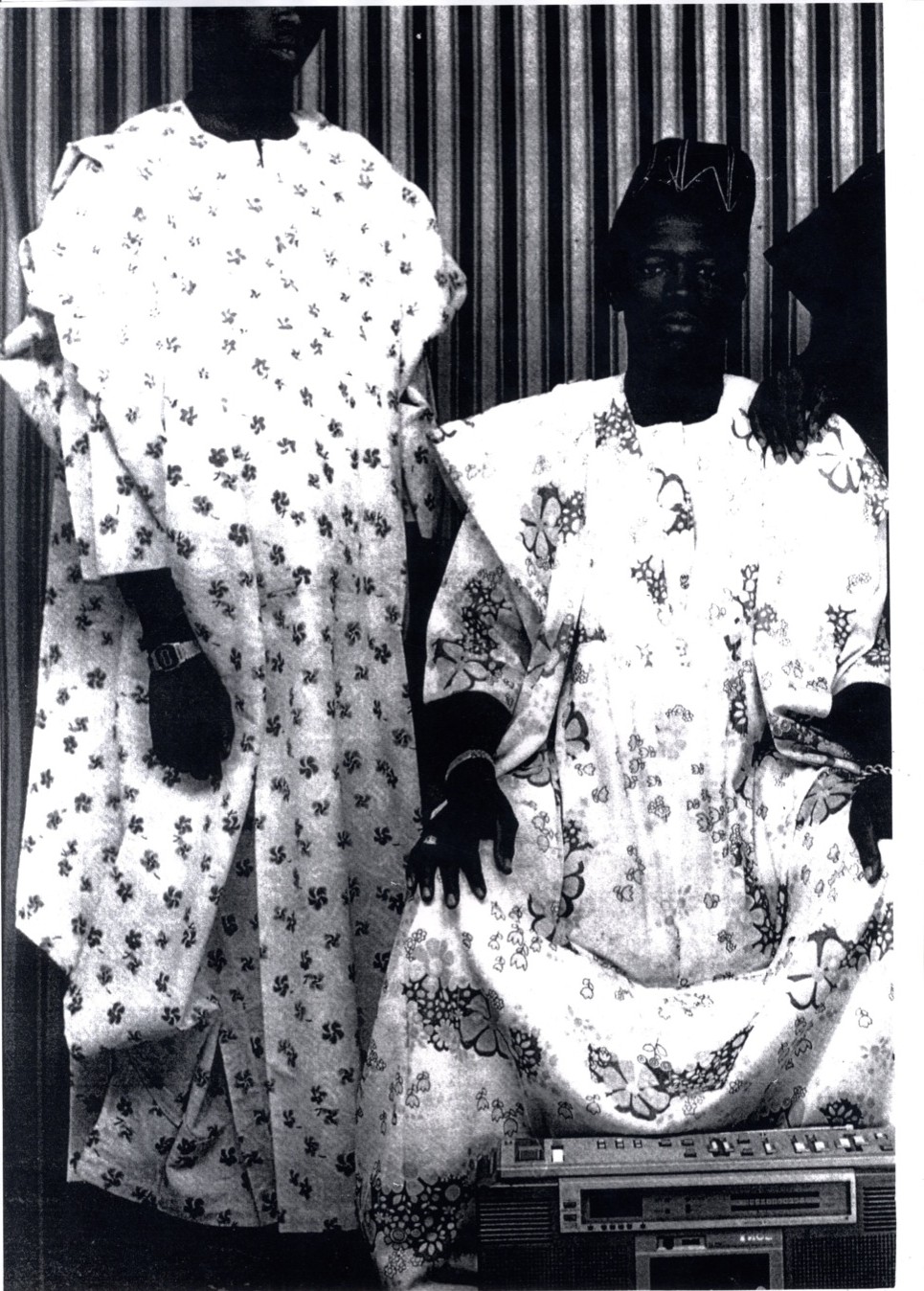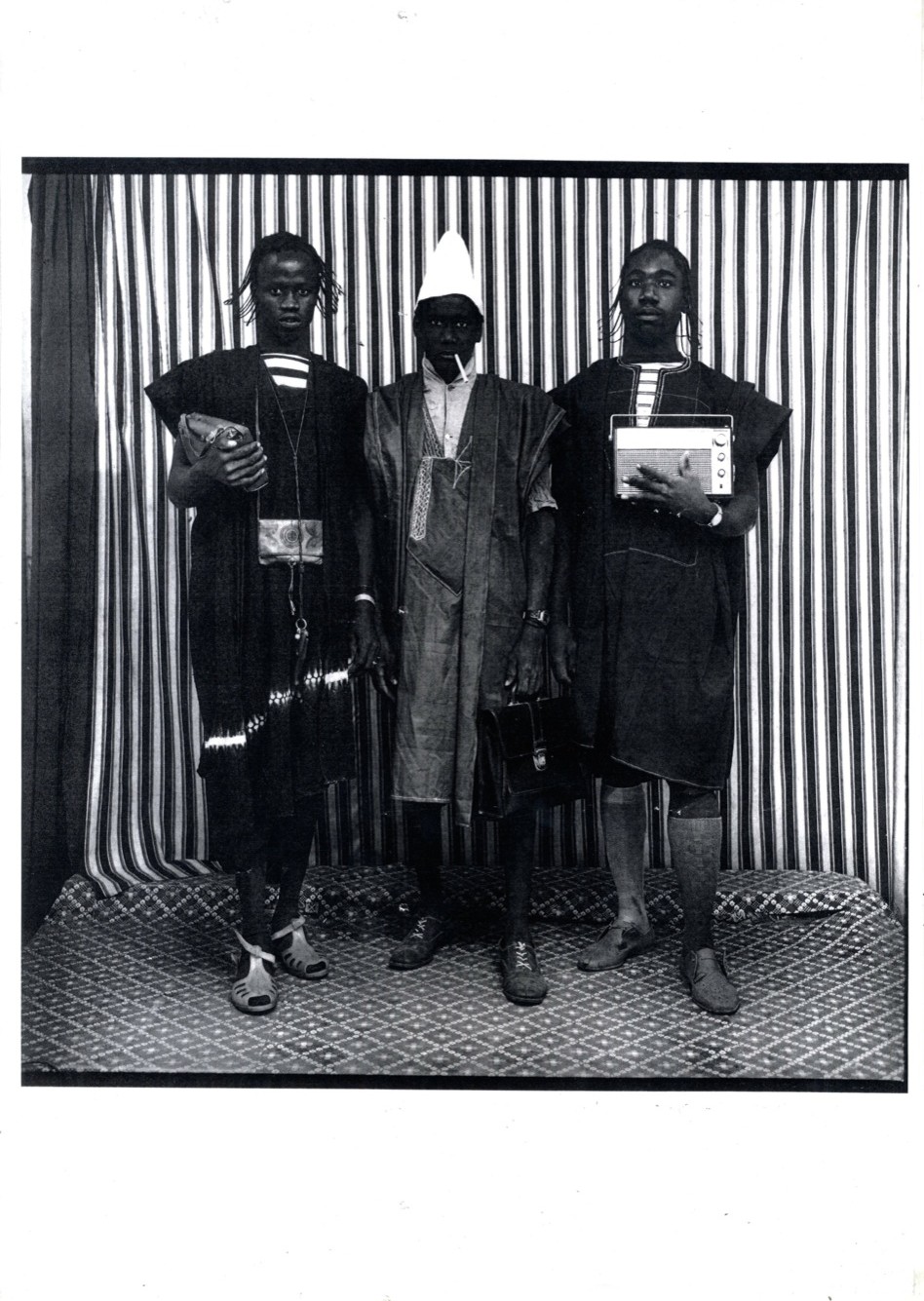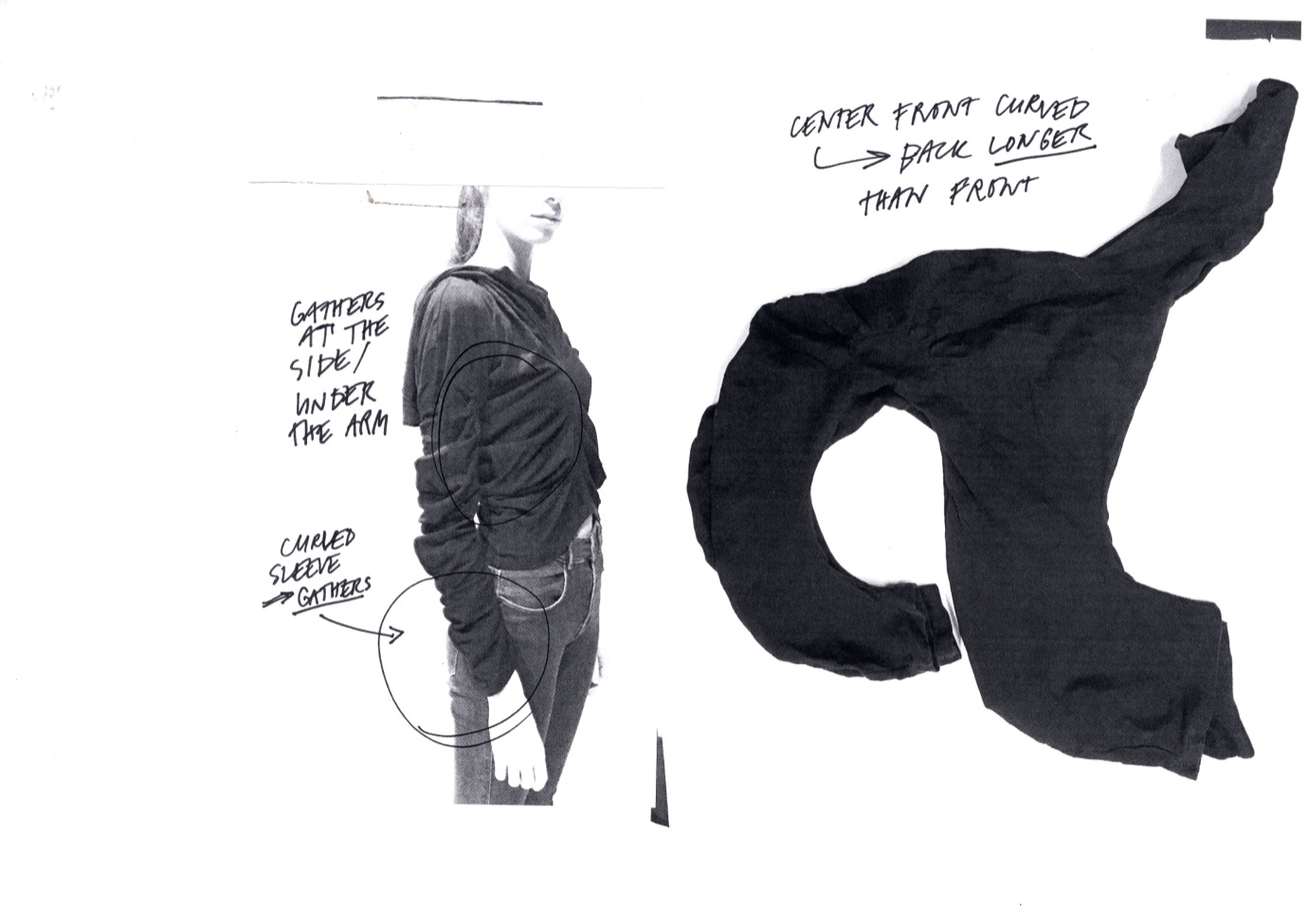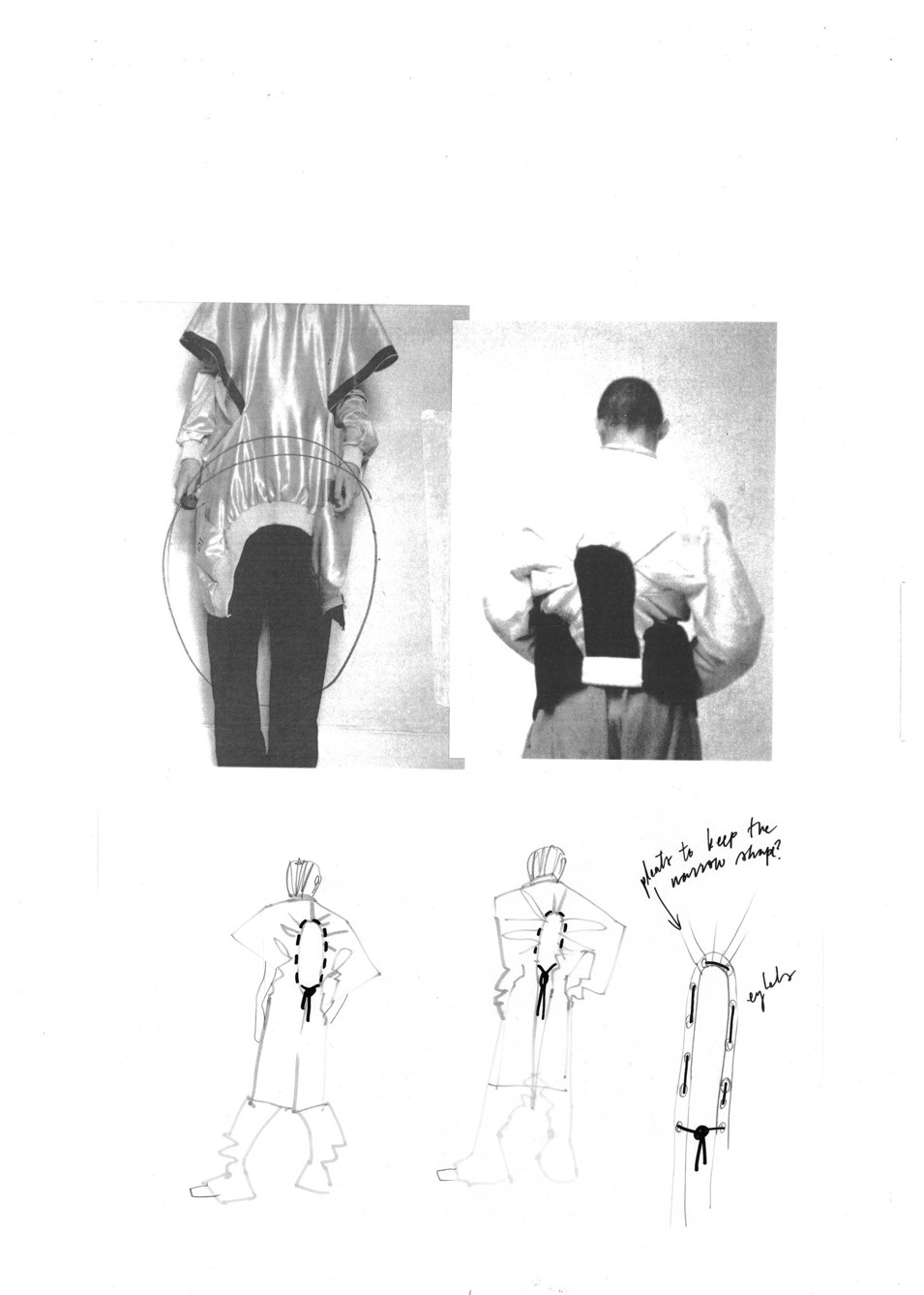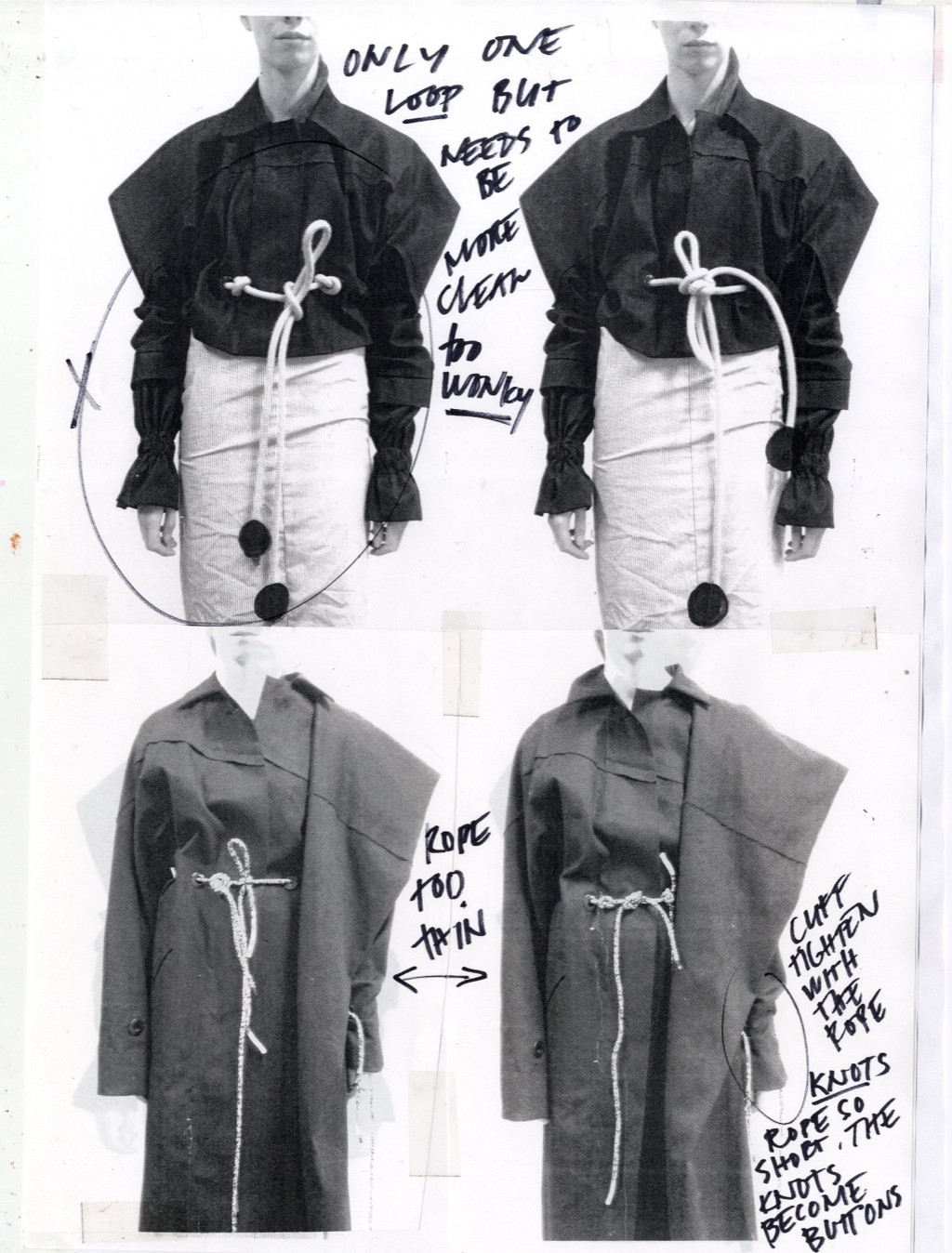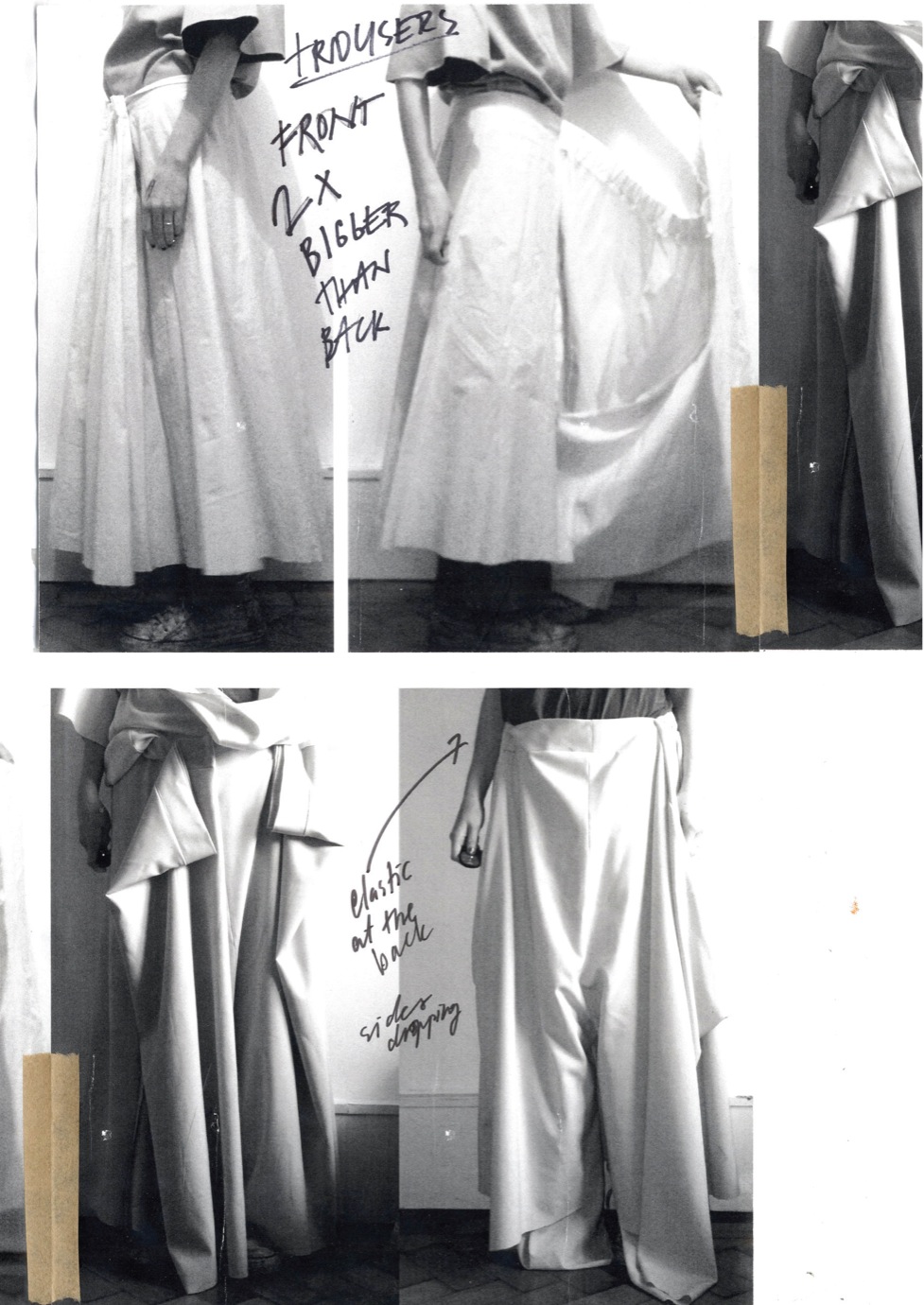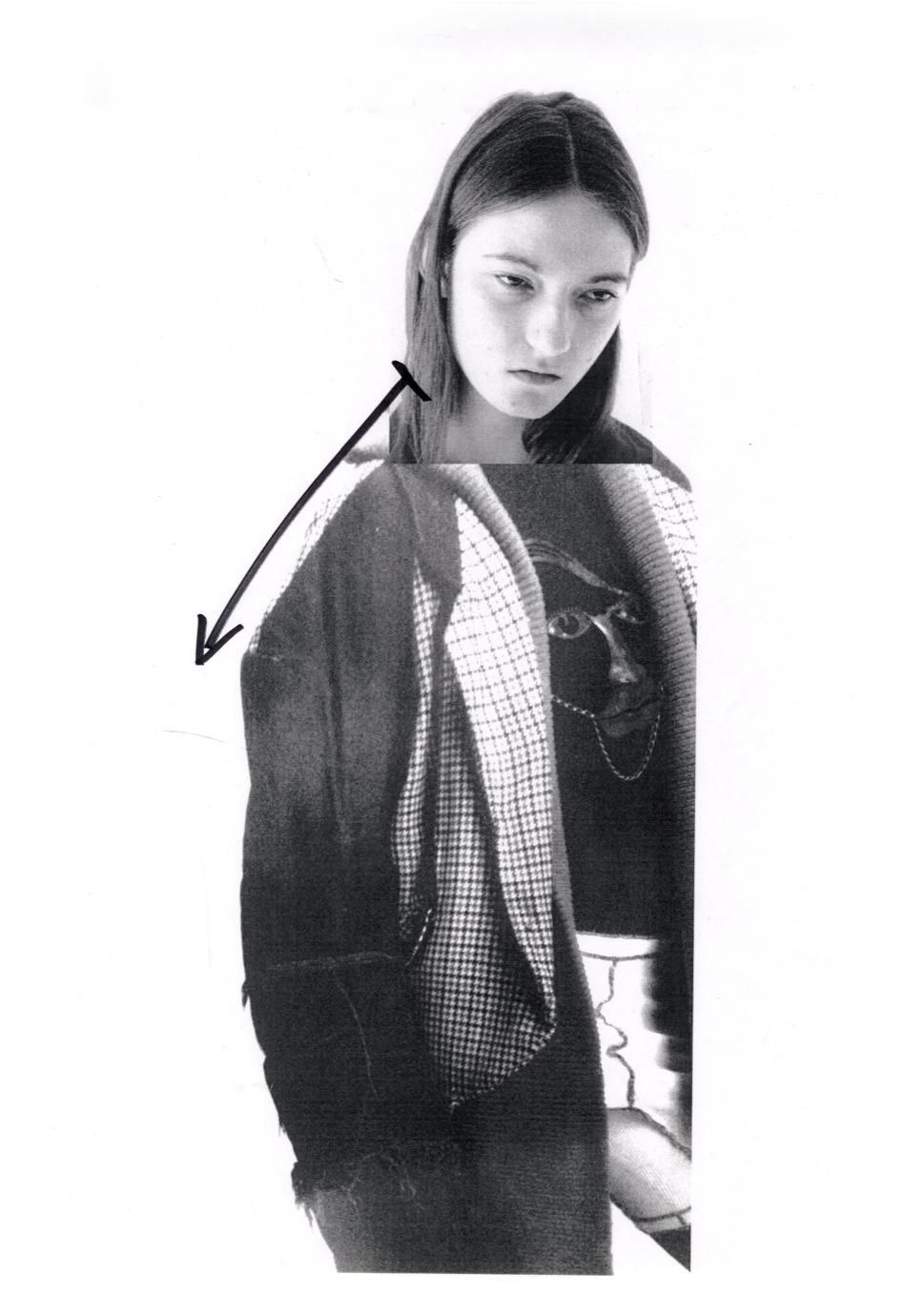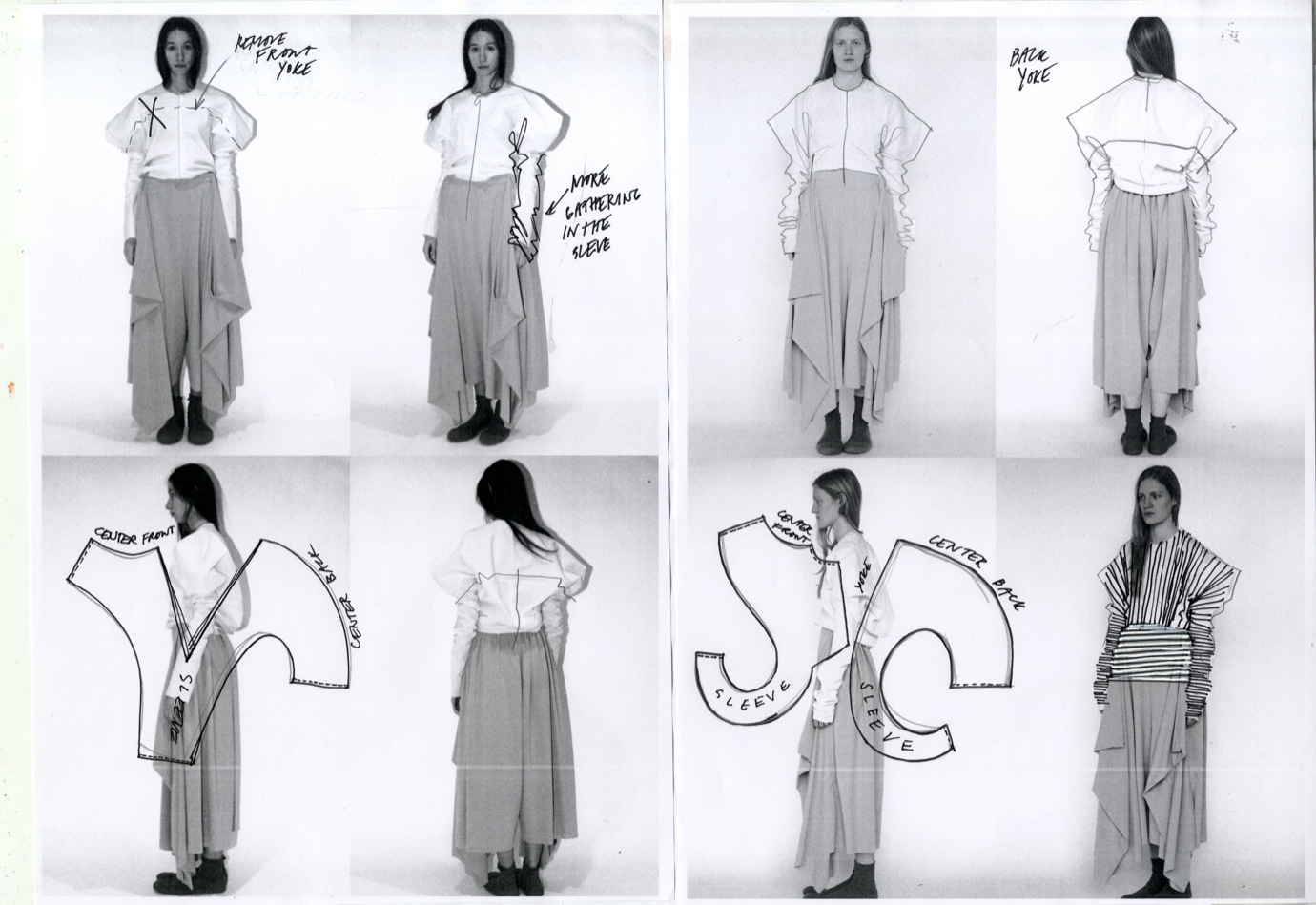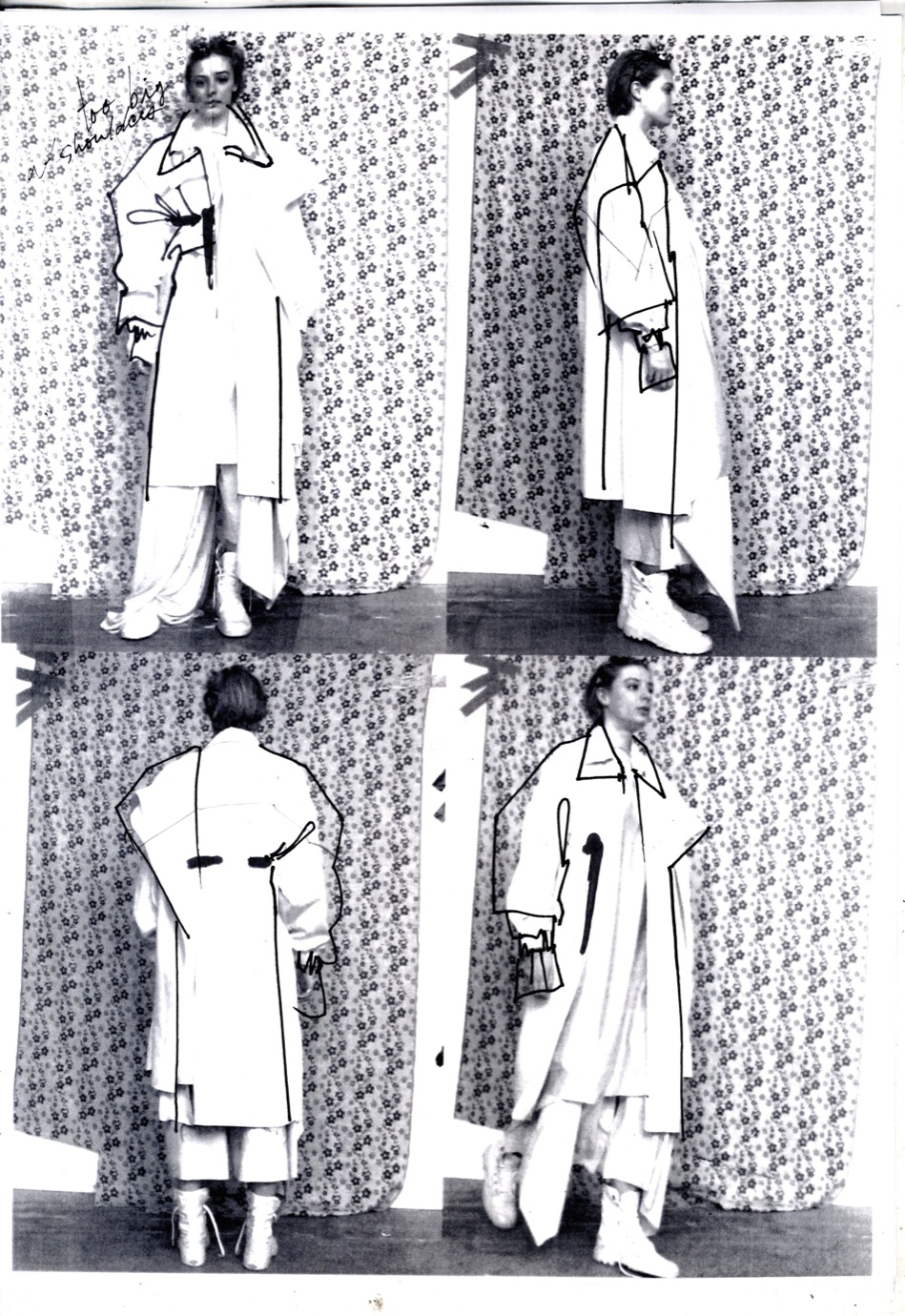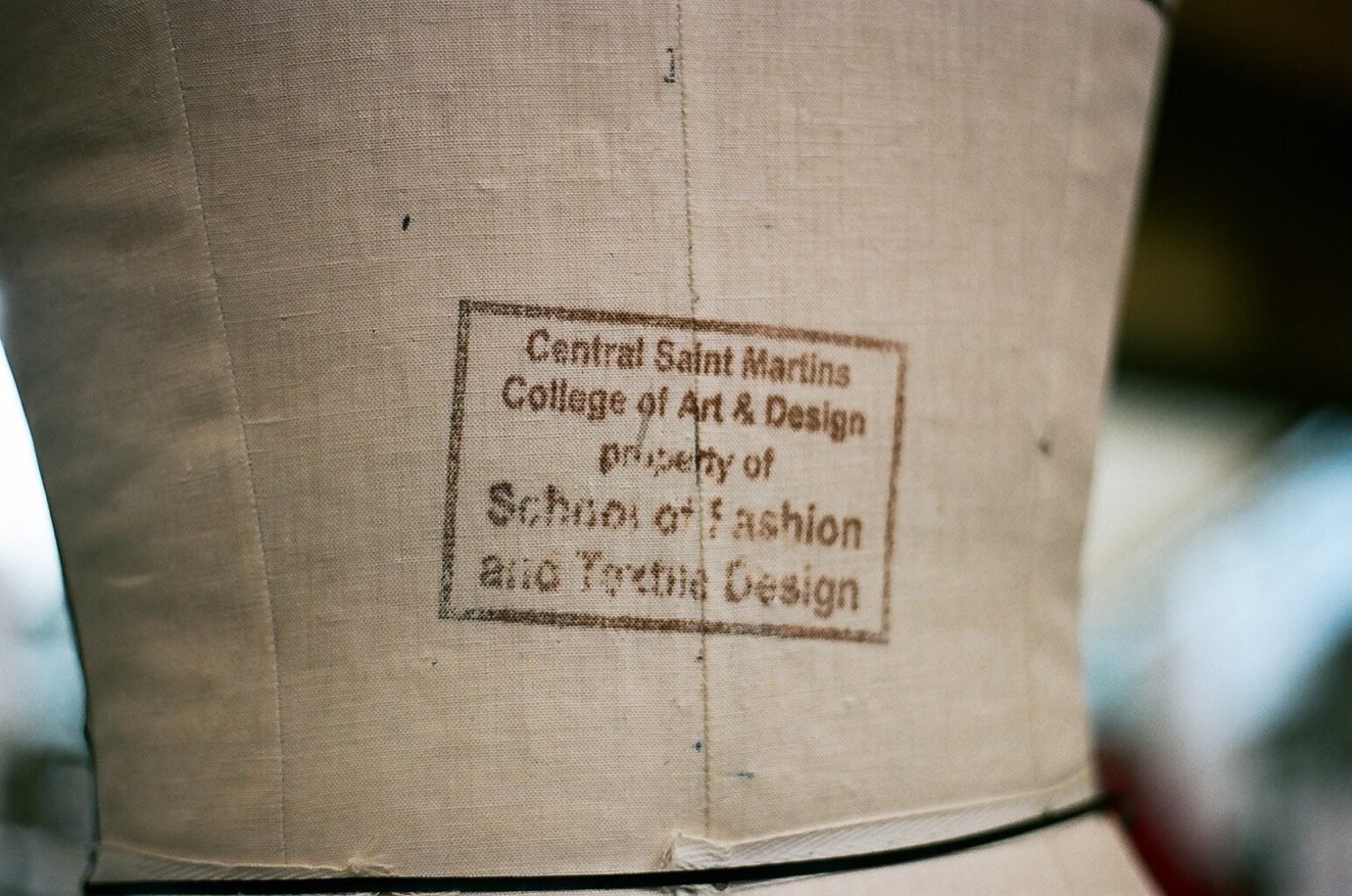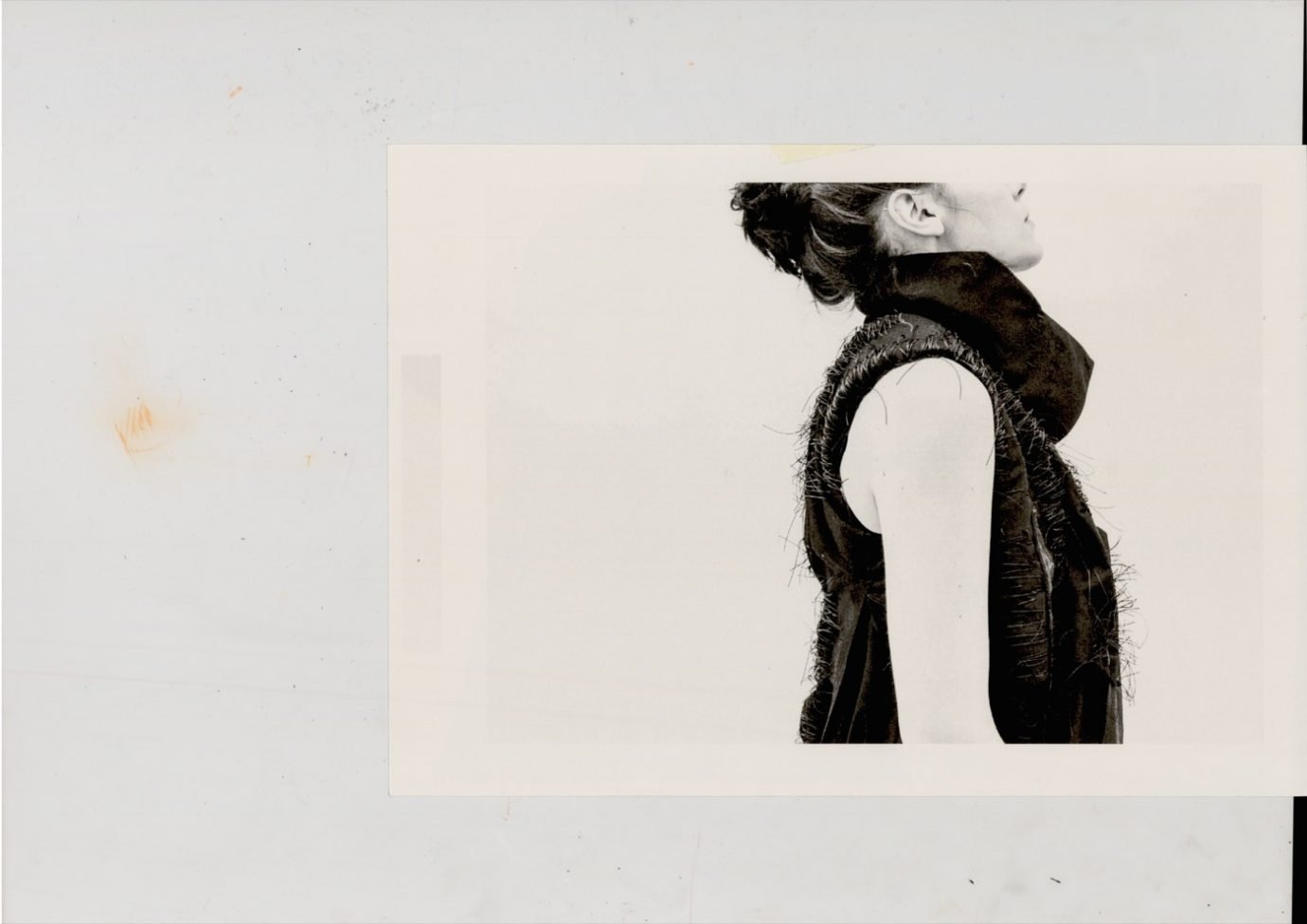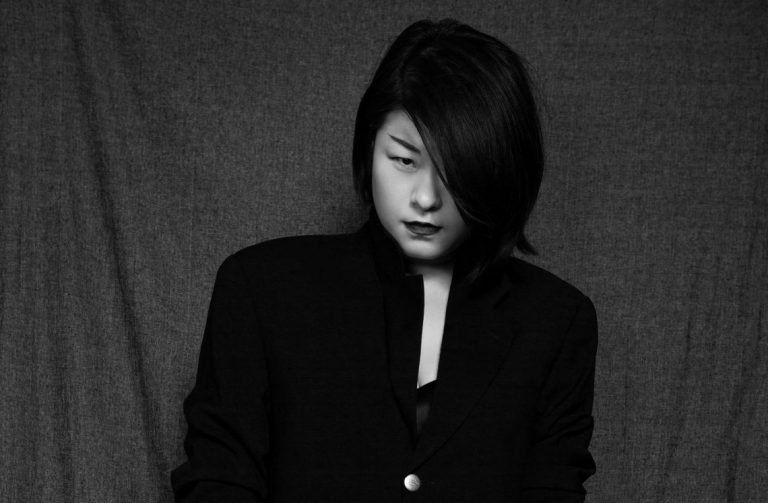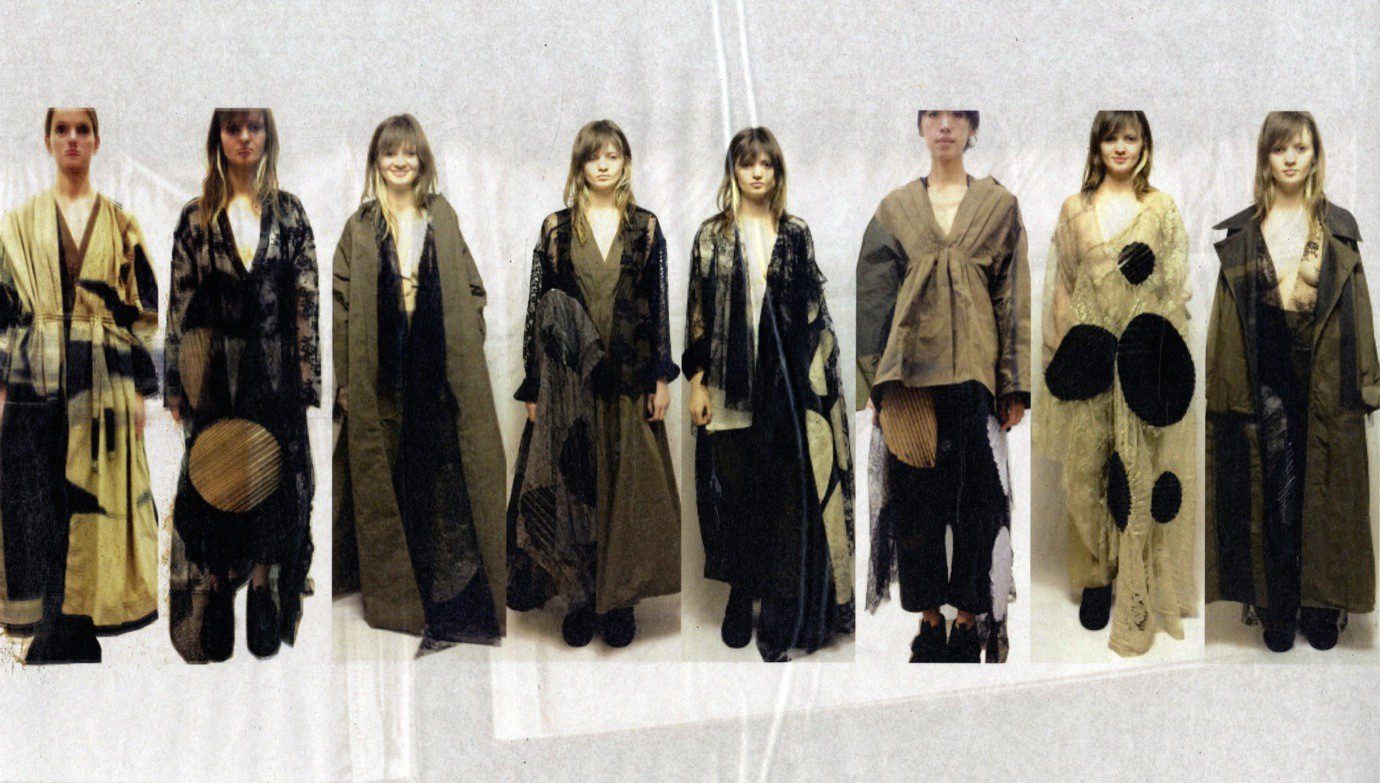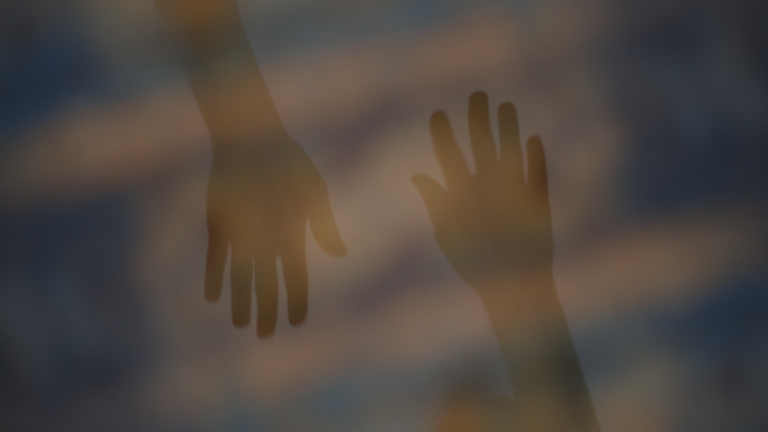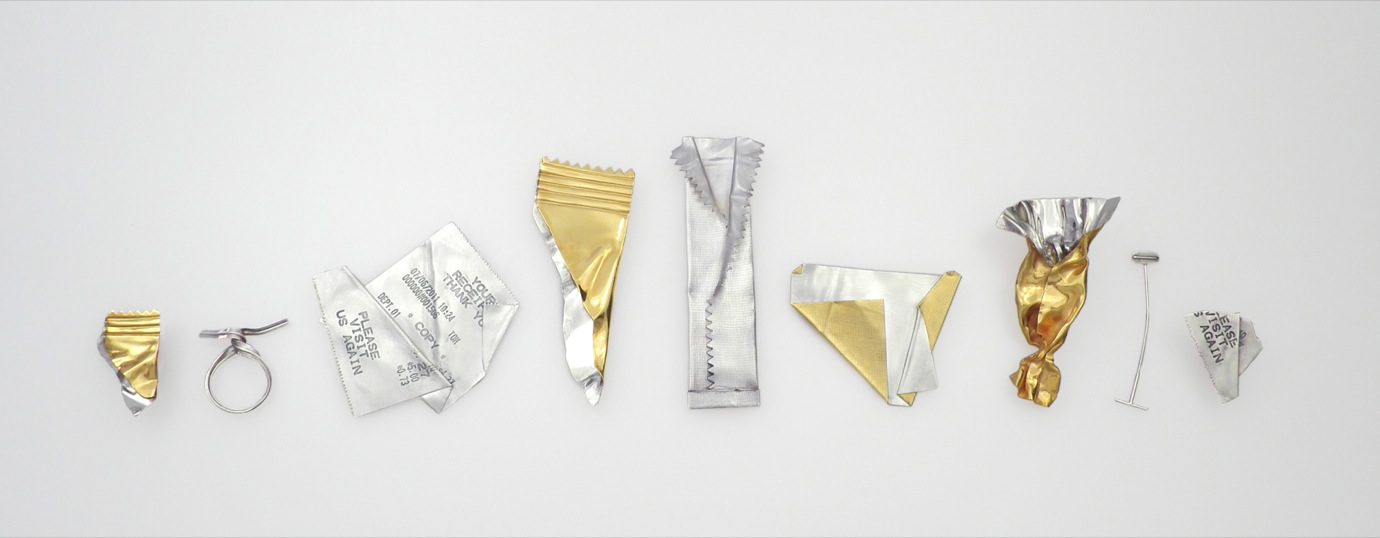After studying BA Fashion at Aalto University School of Art and Design in her home country of Finland, she came straight to Central Saint Martins to study MA Fashion in 2013 and between the two degrees, she interned in Paris with the eccentric jewellery brand Natalia Brilli. Creating this collection in particular, Siiri discovered her way of working through patterns, finding her metaphorical voice as a designer, and has learnt of the importance of feminism within her work. She explains the difficulties of staying true to yourself when you’re constantly being questioned by your tutors and peers, and has learnt that she works best with spontaneity rather than forcing something unnatural.
The Masters: Siiri Raasakka
Siiri Raasakka’s collection is a sharp blend of sophistication and, as she puts it, ‘awkward’ sportswear. The garments feature extensive gathering, whilst keeping their shape apparent and the body’s outline visible. Featuring overstated and elongated silhouettes, the body’s proportions are dramatically altered to craft unique and exciting shapes. At times, she describes the collection as sportswear, but it is the kind of sportswear you wouldn’t wear to actually play sport. With exaggerated, dropped shoulders, banana sleeves and faded colours as stand-out characteristics, the collection is young and clean; athletic, feminist and effortlessly simple.
Siiri’s confidence translates into her designs, she nonchalantly chats away about her collection and all of her ideas behind it. Portraits by Malian photographer Malick Sidibé from the late ‘60s and early ‘70s were the starting point for her collection, which she has diligently constructed around the images that inspired her. Looking to her two favourite books Malick Sidibé: Chemises and Malick Sidibé: La Vie en Rose as a catalyst for her imagination, it was the shapes and patterns of the models’ clothing in the photos that influenced her work. Examining the clothing within these portraits inspired experimentation with pattern cutting, where she would mimic the shapes and folds she could see. Taking the silhouettes from the traditional clothing worn in the photos, Siiri has translated these into her own work, to a point where even the black and white background from one of the portraits has been interpreted into a shirt for her collection. Combining these images with the attitude of London’s 1980’s youth movements, she would find images in old issues of The Face, i-D and Blitz magazines to pore over. She seeks inspiration from the early work of John Galliano, Christopher Nemeth and Vivienne Westwood, where the aesthetics of the buffalo movement act as the backbone to her research. The idiosyncratic silhouettes of these references can be seen throughout her collection, which fabricate an overarching sense of youth.
Working with pattern cutting rather than draping, Siiri makes her own patterns beginning with a block and subsequently, dramatically, transforming them. The garments gather around the waist and envelop the body, creating recognisable silhouettes with a twist. A pair of trousers, for example, feature a long crotch at the front with a shortened seam at the back, with seams to make the leg wrap around the back of itself.
While young people are the inspiration behind her collection, they are also her audience. By treating affordable fabric in the same way as she would with a more expensive alternative, Siiri’s garments become part of an economical and wearable collection. Through research of menswear and sportswear, she searched for a sense of equality between men and women’s clothing, where menswear always seems less restrictive. Here she found her voice as a feminist designer; aspiring to create garments which women could wear with the same casual comfort and ease that men do. As a womenswear designer envisioning clothes for the female body, she was keen to create garments that encompassed masculine shapes and silhouettes while being beautifully crafted to fit a woman’s body. The collection’s colour palette occurred little by little; having worked with toiles in neutral colours, she found that these modest, faded tones seemed to lend themselves sublimely to the designs.
When I ask Siiri what she hopes her collection conveys to an audience, she tells me, “I don’t think I’m trying to say anything. Rather, I’m trying to find my voice as a designer and a way to make clothes that are personal for me.” For Siiri, fashion is more about an interpretation of the current time as opposed to providing a platform for a message. She explains, “Of course it is communication, but in a more subtle manner. The beauty and disadvantage of fashion is that its fast pace forces the designer to work very spontaneously.” I ask Siiri what her future has in store and she tells me that she would firstly like to gain experience working with other designers, to learn how fashion brands are run from the inside, and that perhaps ten years down the line she would like to build up her own name within the industry.

